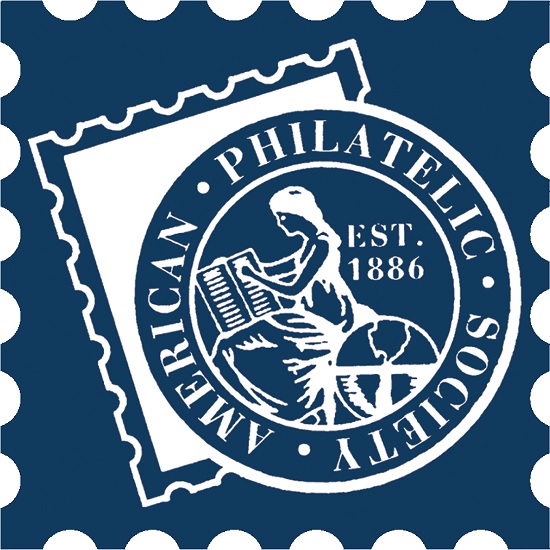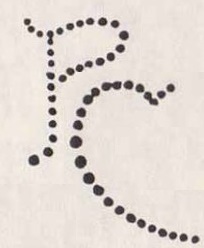Riverside Stamps

Return to Home Page or Altered and Faked stamps Index Page
|
The contents of
this website is copyright protected. Any suggestions for additions or changes are always welcome. |
Suspect Scott #453
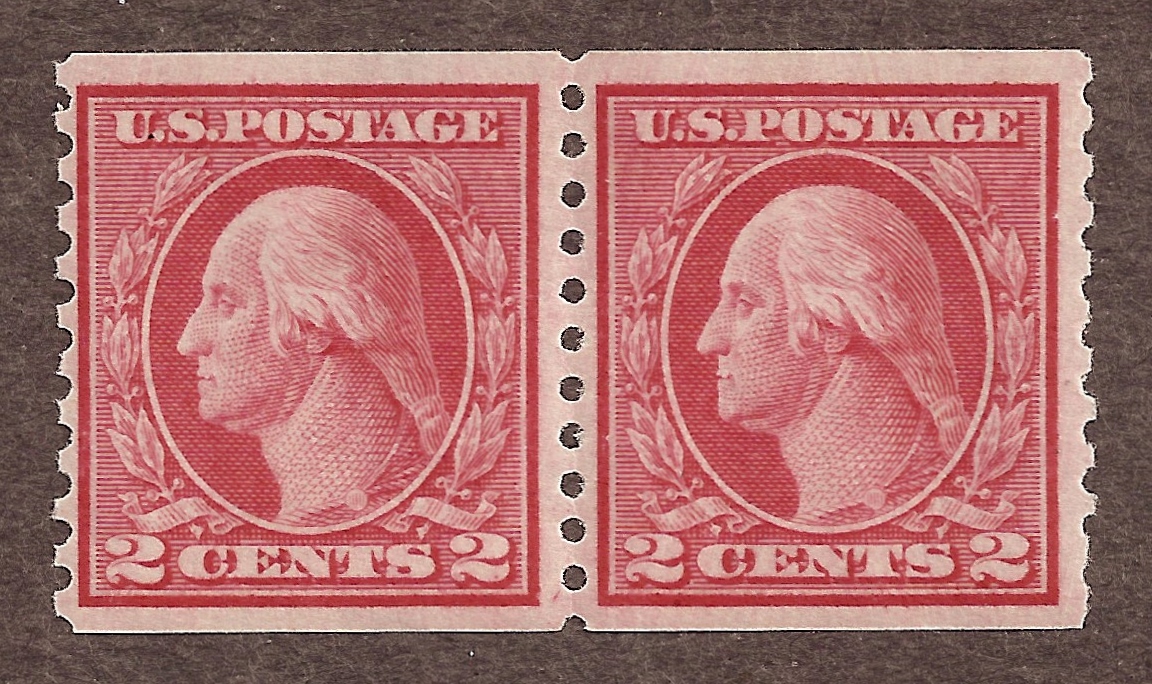
This pair was sent to me for analysis and is a moderately expensive stamp with a catalogue value of $650 for an unused MNH pair. The Experts Book does not flag this stamp as being a candidate that can be faked. The website 1847usa.com states that “There is no type I rotary stock to manufacture these coils, either by adding perforations to an imperforate stamp or by trimming the perfs from a sheet stamp. The flat plate type I coils are sometimes confused with these, so make certain the coil is rotary. The type I vertical rotary coil is sometimes manufactured from the single-line watermarked type III vertical rotary coil, particularly by scraping away the last line in both the left and right ribbons. However, there are so many differences between the type I and the type III stamps detection is rather simple for anyone willing to take the time to examine the stamp closely. The same can be said for the unwatermarked type III vertical rotary coil, but the fake would have no watermark as well as many type III characteristics and be even less convincing.”
The size of this coil should be 19.5mm to 20 mm wide and 22mm high. The suspect measures a strong 19.5mm X 22mm which makes it a rotary press printing.
The Scott #453 should be a single line watermarked stamp. The suspect is a single line watermarked stamp that shows portions of vertical reversed “U” on each stamp – see images below.
Suspect in watermark detection fluid. |
Template over illistration of double line watermark. |
Lastly the #453 should be a Type I printing. There are a number of features that distinguish a Type I from a Type II and a Type III. I can eliminate the possibility of the suspect being a Type III by looking at the top fold of the left ribbon and the bottom fold of the right ribbon. In the case of Type II there would be two shading lines in each fold.
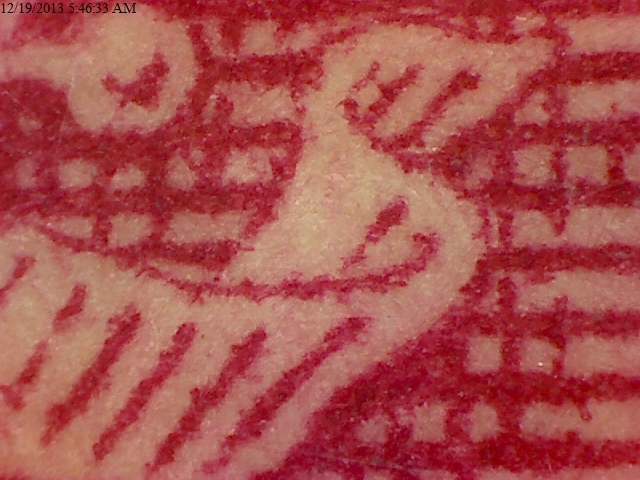 The suspect only has one line of shading in the fold and there is no signs of a second line being scrapped away. A Type I and Type II trait. |
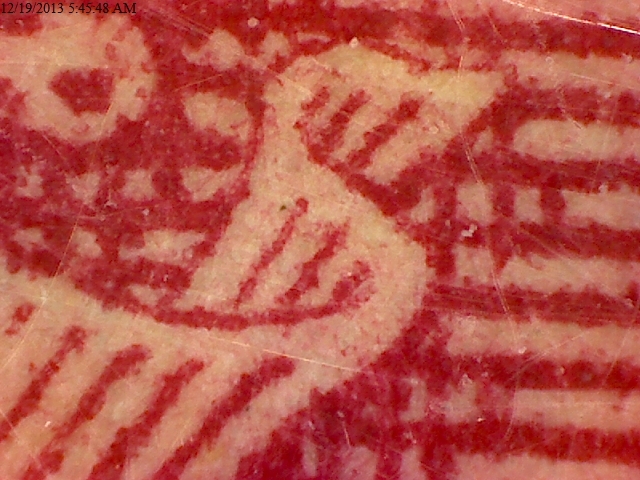 Type III printing has two lines of shading in the fold. |
Another useful area to look is the lock of
hair immediately to the right of the ear.
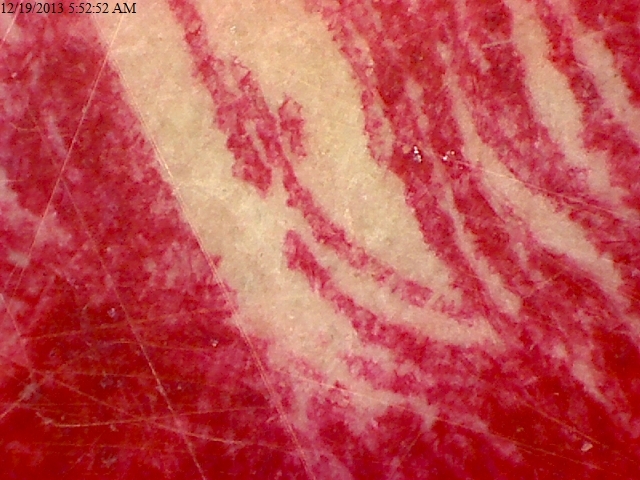 This is an example of a Type I, the two shading lines in the lock of hair have very different lengths with the bottom line being much shorter than the one above it. |
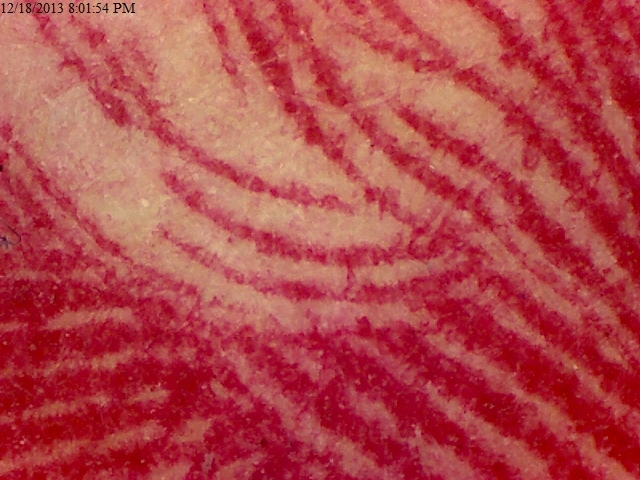 This is an example of a Type II, the two shading lines in the lock of hair are nearly of equal lengths with the bottom line being just a touch shorter than the one above it. |
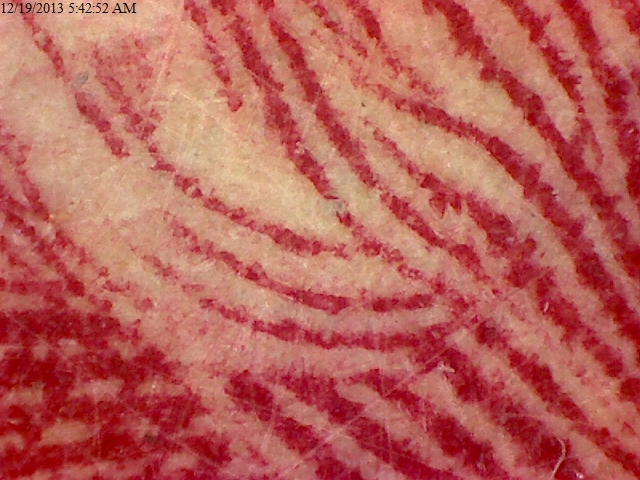 This is an example of a Type III, the two shading lines in the lock of hair have very different lengths with the bottom line being much longer than the one above it. |
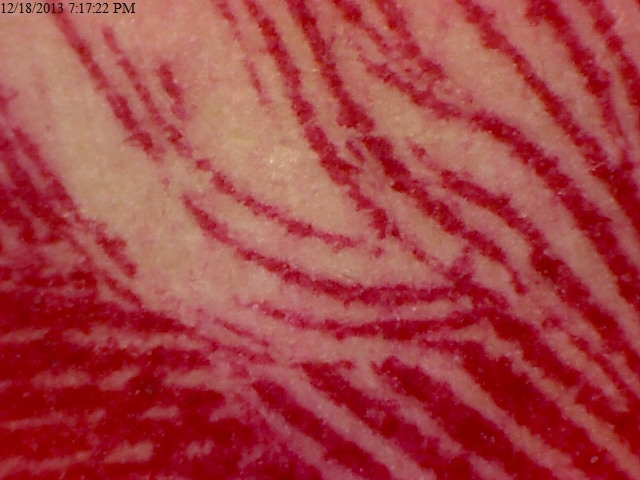 The bottom line of the suspect’s lock of hair is considerably shorter than the one above it – a Type I trait |
||
The next useful area to look is the two shading lines immediately below the ear.
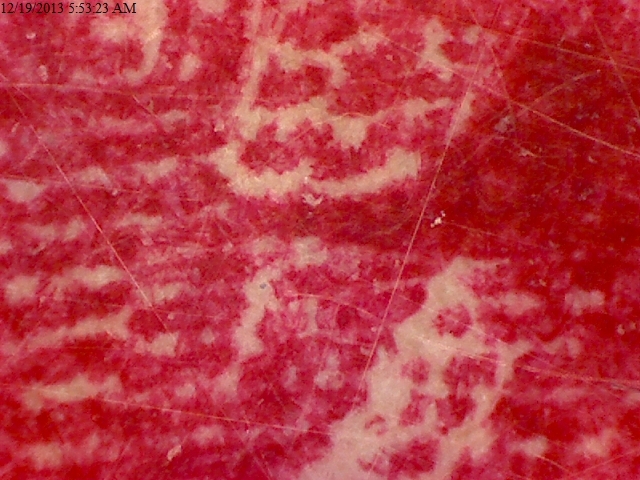 This is an example of a Type I, the two to three shading lines are broken resulting in a distinct vertical white line. |
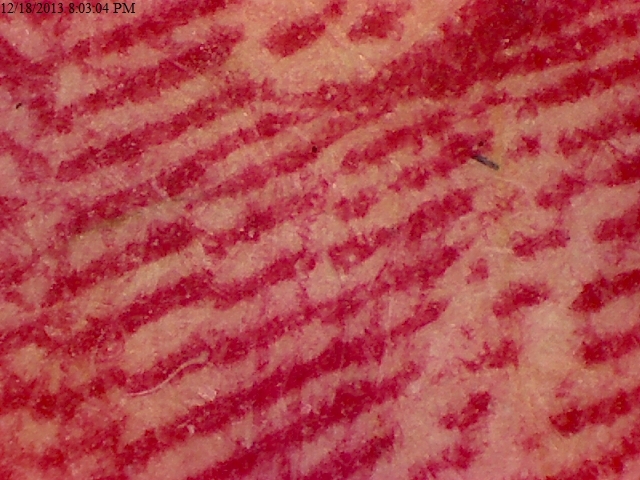 This is an example of a Type II, the two to three shading lines are more closed up resulting in a barely vertical white line. |
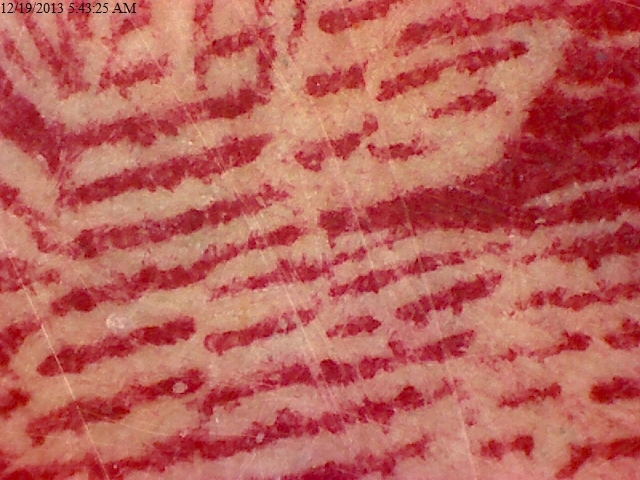 This is an example of a Type III, the two to three shading lines are closed up resulting in no noticeable vertical white line. |
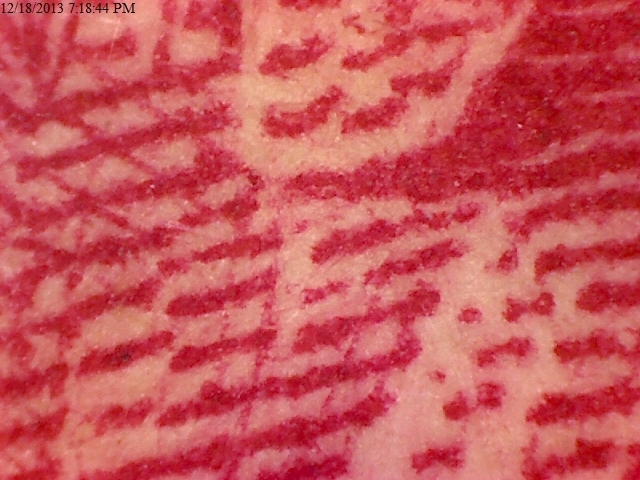 The suspect has a very distinct vertical white line – a Type I trait. |
||
The next useful area to look is lock of hair on Washington’s cheek.
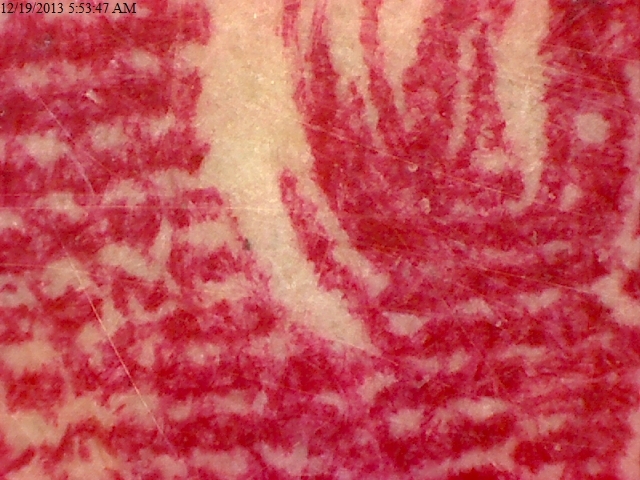 This is an example of a Type I; the vertical line along the left edge of the lock of hair will be weak often broken. |
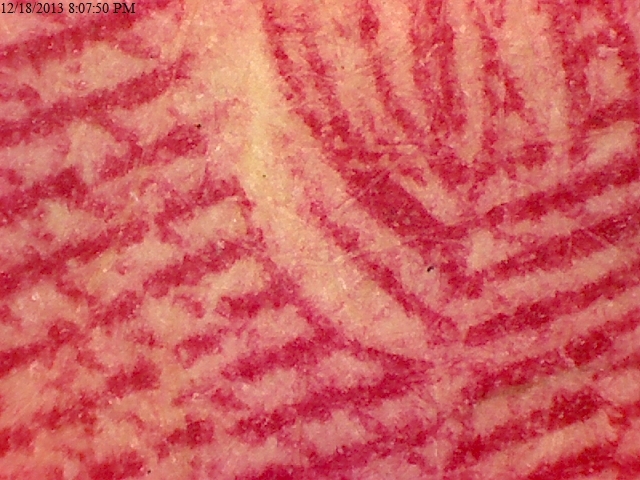 This is an example of a Type II; the vertical line along the left edge of the lock of hair will be strong connecting four to five lines. |
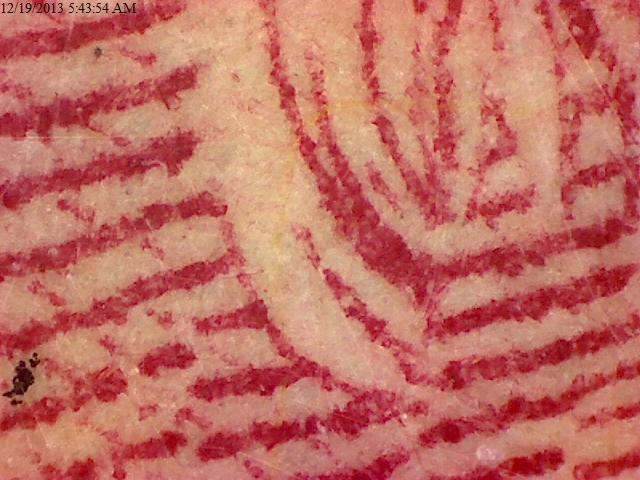 This is an example of a Type III; the vertical line along the left edge of the lock of hair will be strong connecting four to five lines. |
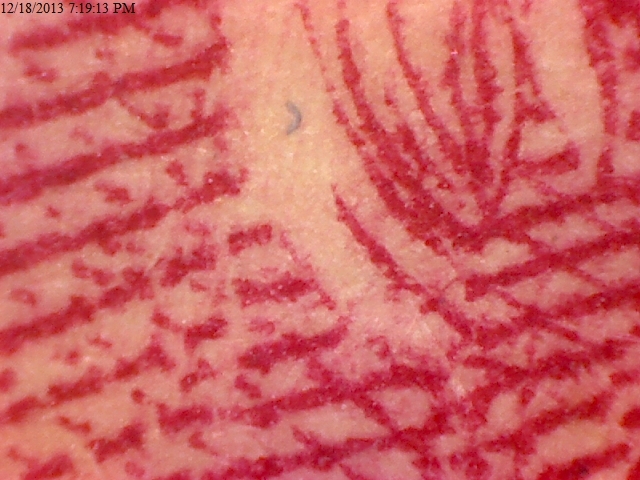 The suspect has a vertical line that is weak and broken – a Type I trait. |
||
The next place to look is the first shading line after the first ribbon fold on the right.
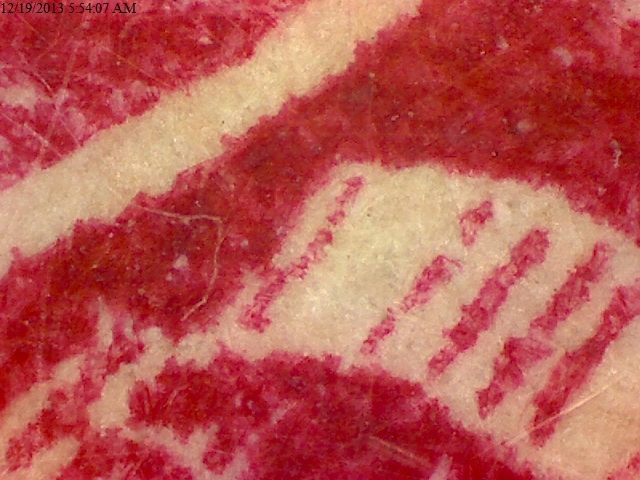 This is an example of a Type I; often appears as a single unbroken line. At time there may be one or two indistinct breaks. The bottom third will tend to be stronger. |
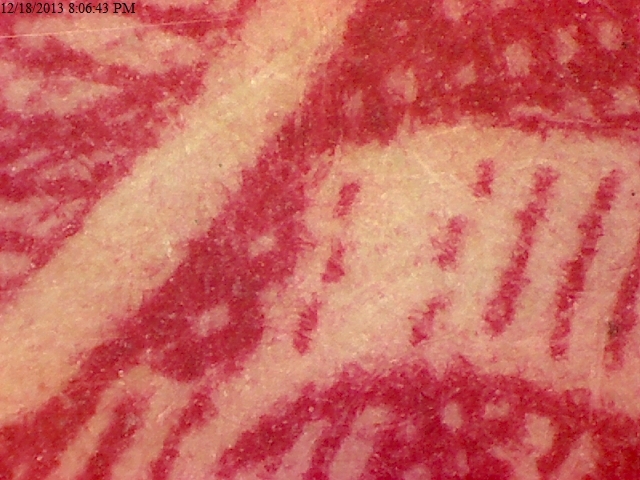 This is an example of a Type II; usually appearing as a series of three dashes of equal strength. |
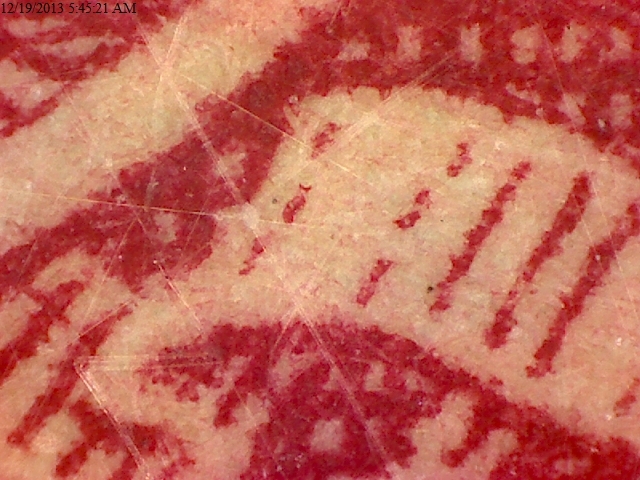 This is an example of a Type III; usually appearing as a series of three dashes of equal strength. |
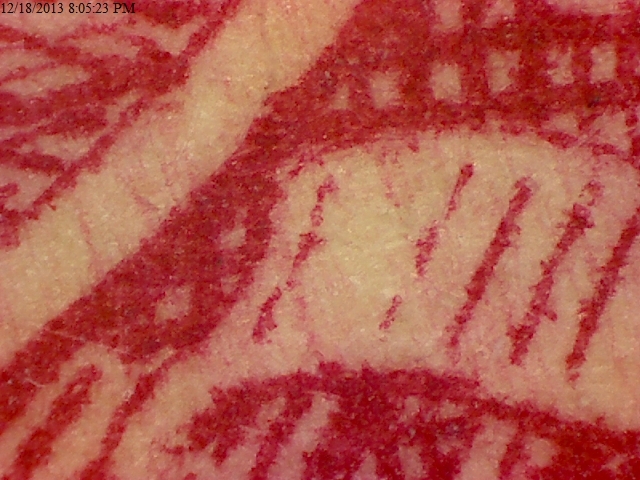 The suspect is a single line with an indistinct break in the bottom third – a Type I trait. |
||
The last place to look is toga rope and toga button.
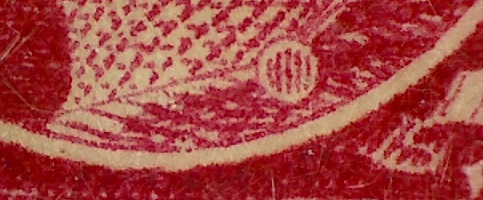 This is an example of a Type I; the top line of the rope and the outline of the button are thin, sometime broken. The shading lines of the toga rope are noticeably thicker at the bottom. |
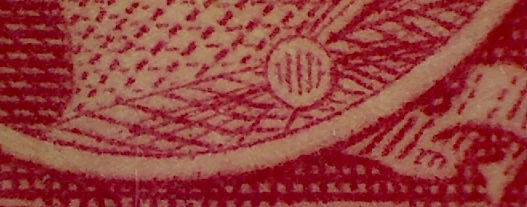 This is an example of a Type II; the top line of the rope and the outline of the button are complete and fairly strong. The shading lines of the toga rope are uniformly thick or nearly so. |
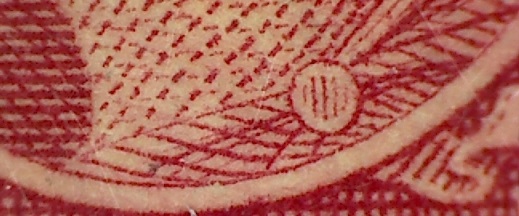 This is an example of a Type III; the top line of the rope and the outline of the button are complete and fairly strong. The shading lines of the toga rope are uniformly thick or nearly so. |
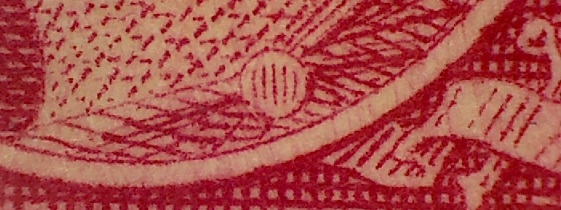 The top line of the rope and the outline of the button of the suspect are thin and broken in places. The shading lines of the toga rope are noticeably thicker at the bottom - a Type I trait. |
||
In conclusion: there is no doubt that the suspect is a Type I printing with a single line watermark, horizontal coil perforated 10 vertically Scott #453 with short perfs on the right.
Reference material used:
- The Expert's Book. A practical guide to the authentication of United States stamps. By Paul W. Schmid.
- How to Detect Damaged, Altered and Repaired Stamps. By Paul Schmid
As always comments and suggestions are always welcome.
To Contact Riverside Stamps:
Email:
Mike Girard - Owner / Operator / Web Master:
g1rardmn1099@comcast.net
|
I am a member of the American Philatelic Society
|
I am a member of the United States Stamp Society 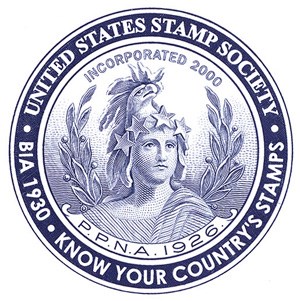 USSS #: 16733 Visit the United States Stamp Society Website at www.usstamps.org |
I am a member of the Perfins Club
|
